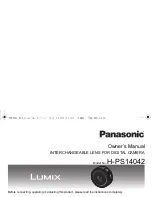
Page 3 of 5
Operating the lens with a standard power supply
Several standard power supplies can be used as a current source. The internal resistance of the lens is of 12.5
Ohm at room temperature. Following Ohm’s law: U = R x I, 400 mA can be driven through the lens with a 5 V
supply voltage. This maximal value should not be exceeded. The recommended handling procedure of the lens
is as follows:
1.
Set the supply voltage to 5 V
2.
Switch over to current control
3.
Connect the lens
4.
Adjust the driving current with current control knob
Figure 1: Use of a standard power supply to drive the EL-10-30.
Left: Voltage display in volts. Right: Current display in milliamps.
The power consumption of the lens, derived from P = R x I
2
, is of 2 Watts at maximum. This consumption is
dissipated in heat. The lens may become very hot if it is operated over a long period of time with more than 1.1
Watt power consumption (300 mA in terms of current).
Attention: Using a current over 400 mA for several minutes may thermally damage the lens!
Recommended drivers/power supplies
There are several off-the-shelf products available that can be used to control the EL-10-30-C:
Precision constant current driver for laser diodes with external control via 0-5V analog signal (e.g. Ed-
mund Optics NT56-804 or NT84-355, Thorlabs LD1255R)
LED Driver from Thorlabs (LEDD1B) with manual control or PWM & frequency control via 0-5V signal
For high precision applications (0.1mA resolution) with manual control: TTi QL355
For high precision applications (0.1mA resolution) with USB/RS232 computer control: TTi QL355P
For low precision applications (1mA resolution) with manual control: TTi EL301R
For low precision applications (1mA resolution) with USB computer control: Quakko HY3005DP
http://shop.vendio.com/Evan2002/item/2041700966/?s=1282809362
Operating the lens with custom electronics
Dedicated control electronics can be designed e.g. by using pulse width modulation (PWM). The frequency in
this case should be set between 20 kHz and 50 kHz. Another very useful component is the ADN8810 program-
mable precision current source of Analog Devices, which features 12 bits of resolution and can be controlled
with an SPI interface. If the lens is operated with custom-built or non-certified electronics, Optotune cannot
guarantee the correct functioning of the lens and is not liable for any consequences of its use.
Voltage control
Current Control
Switch between voltage and current control
www.envision.co.kr
(주)앤비젼
서울시 금천구 가산동 550-1 IT캐슬 1동 603호 (153-768)
Tel.
02. 2624. 5503
Fax.
02. 2082. 6427
e-mail.
sales@envision.co.kr
www.envision.co.kr
•Supporting your Vision









